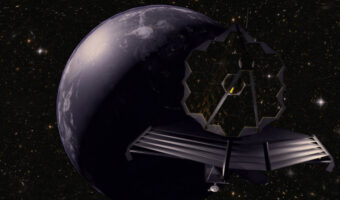Spacecraft Systems and Orbital Mechanics
About This Course
The course “Spacecraft Systems and Orbital Mechanics” provides students with a comprehensive understanding of the systems and principles involved in spacecraft design, operation, and orbital mechanics. Through a combination of theoretical knowledge and practical examples, students will gain the skills necessary to design, analyze, and navigate spacecraft in various orbital regimes.
The course begins by exploring the fundamental principles of space exploration, including the historical context and milestones in space missions. Students will gain an understanding of the challenges and considerations specific to spacecraft systems and orbital mechanics.
Building upon this foundation, the course delves into the various systems and subsystems of spacecraft. Students will learn about spacecraft propulsion systems, attitude control systems, power and thermal management systems, communication systems, and on-board instrumentation. They will gain insights into the integration, operation, and constraints associated with each system.
The course covers orbital mechanics, including the motion of spacecraft in space and the principles governing their orbits. Students will learn about Kepler’s laws, orbital elements, orbit determination, and the factors influencing orbital dynamics, such as gravitational forces and perturbations.
Furthermore, the course addresses the design and analysis of spacecraft trajectories and orbital manoeuvres. Students will study concepts such as launch windows, transfer orbits, rendezvous and docking, stationkeeping, and re-entry trajectories. They will gain insights into the calculations, simulations, and optimization techniques used in spacecraft mission planning and navigation.
The course also covers topics related to space mission planning and management, including payload considerations, mission objectives, mission lifecycle, ground support systems, and mission operations. Students will explore the interdisciplinary nature of space missions and the collaboration between engineering, science, and operational teams.
Throughout the course, students will engage in practical exercises and projects to apply their knowledge in spacecraft systems and orbital mechanics. They will utilize simulation tools, such as orbit simulators and mission planning software, to analyze and optimize spacecraft trajectories and mission parameters.
By the end of the course, students will have acquired a comprehensive understanding of spacecraft systems and orbital mechanics. They will have developed the skills to design, analyze, and navigate spacecraft in various orbital regimes. This knowledge will prepare them for careers in space agencies, aerospace companies, research institutions, or related industries, where expertise in spacecraft systems and orbital mechanics is essential for successful mission planning and execution.
Learning Objectives
Material Includes
- E-Books
- Guide Papers
- 1&1 Consultation
- Certificate of Completion
This course is best for:
- Undergraduate Aerospace Engineering Students: This course serves as a core component of the undergraduate curriculum in Aerospace Engineering or a related discipline. It provides students with a comprehensive understanding of spacecraft systems and orbital mechanics, preparing them for careers in the space industry.
- Graduate Aerospace Engineering Students: Master's or doctoral students specializing in Aerospace Engineering or a related field who want to deepen their knowledge and skills in spacecraft systems and orbital mechanics. This course can provide them with advanced concepts and research opportunities.
- Aerospace Engineering Professionals: Engineers and professionals working in the aerospace industry, including space agencies, spacecraft manufacturers, and research institutions, who want to enhance their understanding of spacecraft systems and orbital mechanics. This course can help them develop expertise in specific areas or stay updated with the latest advancements.
- Space Mission Planners and Operators: Individuals involved in space mission planning, spacecraft operations, and mission control activities who want to gain a comprehensive understanding of spacecraft systems and orbital mechanics to effectively plan, execute, and monitor space missions.
- Spacecraft Designers and Engineers: Individuals engaged in the design, development, and testing of spacecraft who want to enhance their knowledge of spacecraft systems and their integration with orbital mechanics. This course can provide them with insights into the various subsystems and their interactions.
- Researchers and Academics: Scholars, researchers, and academics in the field of Aerospace Engineering or related disciplines who want to deepen their knowledge and understanding of spacecraft systems and orbital mechanics for advanced research, teaching, or consultancy purposes.
- Enthusiasts and Hobbyists: Individuals with a strong interest in space exploration and spacecraft who want to gain a comprehensive understanding of the principles, considerations, and challenges associated with spacecraft systems and orbital mechanics.






